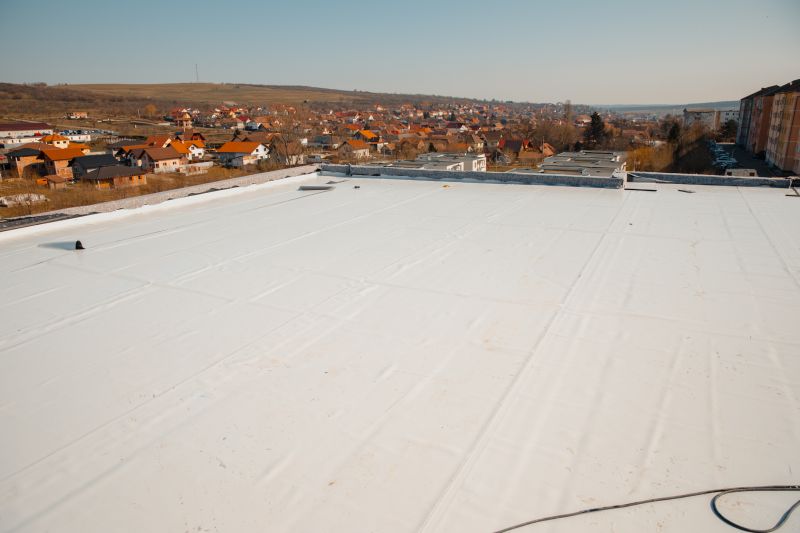Top Waterproofing Products for Effective Moisture Protection
Discover the most reliable waterproofing solutions designed to safeguard your property from water damage and leaks.
 Waterproofing products are essential solutions for protecting various structures from water intrusion and damage. They are used in a wide range of applications, including basements, roofs, foundations, and outdoor surfaces. Selecting the right waterproofing materials can help prevent issues such as leaks, mold growth, and structural deterioration, ensuring the longevity and integrity of buildings and surfaces. The market offers a diverse array of products designed to meet different needs, from liquid coatings to membrane systems, each with unique features suitable for specific environments.
Waterproofing products are essential solutions for protecting various structures from water intrusion and damage. They are used in a wide range of applications, including basements, roofs, foundations, and outdoor surfaces. Selecting the right waterproofing materials can help prevent issues such as leaks, mold growth, and structural deterioration, ensuring the longevity and integrity of buildings and surfaces. The market offers a diverse array of products designed to meet different needs, from liquid coatings to membrane systems, each with unique features suitable for specific environments.
Top Overall Option
Liquid Waterproofing Membrane
A versatile liquid membrane offers seamless coverage and can be applied to various surfaces, including roofs, foundations, and decks. It forms a flexible, waterproof barrier that adapts to surface movements, providing reliable protection against water penetration. Easy to apply with brushes, rollers, or spray equipment, this type of product is suitable for both DIY projects and professional applications, making it a popular choice for many waterproofing needs.
Types of Products For Waterproofings
Bituminous Coatings
Asphalt-based coatings that create a durable, waterproof layer suitable for roofing and foundation sealing.
Liquid Rubber
Flexible, rubber-like coatings that form seamless waterproof barriers ideal for roofs and decks.
Polyurethane Coatings
High-performance coatings known for their strong adhesion and elastic properties, suitable for various surfaces.
Cementitious Waterproofing
Waterproof cement-based mixes used mainly for basement walls and water tanks, offering ease of application.
Bitumen Sheets
Self-adhesive or torch-applied membranes that provide a robust waterproof layer for roofing and foundations.
EPDM Membranes
Synthetic rubber sheets used primarily in roofing and pond lining for their durability and flexibility.
Liquid Membranes
Spray or brush-on coatings that create seamless waterproof barriers on various structures.
Sealants and Caulks
Flexible sealants used to fill cracks and joints, preventing water ingress in small gaps.
Waterproof Paints
Coatings that provide a protective waterproof layer on exterior walls and surfaces.
Polyurea Coatings
Rapid-curing, high-strength coatings suitable for extreme waterproofing applications.
Drainage Mats
Materials that direct water away from surfaces, often used in foundation waterproofing systems.
Waterproofing Membranes
Flexible sheets or coatings designed to create a barrier against water intrusion.
Hydrophobic Sealants
Specialized sealants that repel water and prevent absorption into surfaces.
Spray-On Waterproofing
Aerosol or liquid sprays that can quickly coat surfaces for waterproof protection.
Polyurethane Foam
Expanding foam used for sealing leaks and gaps in waterproofing applications.
When considering waterproofing options, it is important to evaluate the nature of the surface or structure, the exposure level to water, and the desired durability. Some products are formulated for interior use, providing a barrier against moisture seepage, while others are designed for exterior applications, capable of withstanding harsh weather conditions. Proper surface preparation, application techniques, and product compatibility are critical factors that influence the effectiveness of waterproofing solutions.
In Trenton, MI, where seasonal changes can bring fluctuating moisture levels, selecting reliable waterproofing products can be particularly beneficial. Whether tackling basement dampness, sealing roof leaks, or waterproofing outdoor decks, understanding the variety of available products helps in making informed decisions. Always consider the specific requirements of your project and consult product specifications to ensure compatibility and optimal performance. Investing in quality waterproofing materials can contribute to maintaining structural safety and reducing long-term repair costs.
